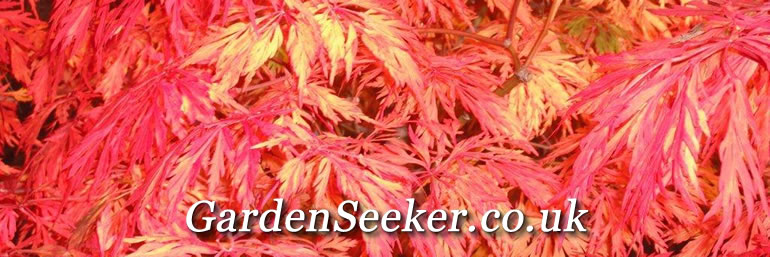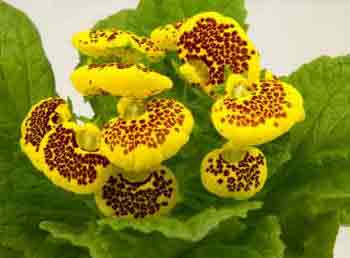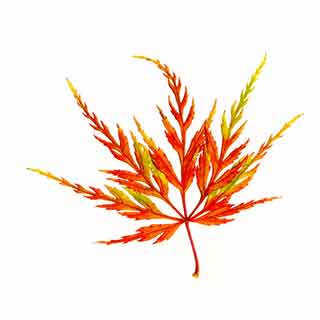

Calceolarias prefer a cool growing climate – something similar to that of us humans – so that makes it an ideal houseplant! It can also provide a splash of colour in outdoor containers - such as patio tubs and window boxes; giving a splash of colour before the main summer bedding plants are in bloom.
Calceolaria, Slipperwort, or Pocketbook flower was always one of my favourite plants to use when I was employed as a floral decorator in a major London parks and gardens department. They brightened up many offices – and the staff within – with the wide range of flower colours set against the hairy light green foliage. The fact that they normally flower in the late spring or early summer was also an added bonus, in that they followed on from Cineraria and Cyclamen plants.
 Slipper flowers – study the blooms and you will soon see why so
called – are not very demanding when used as houseplants.
Regular
watering, cool place to grow and away from direct sunlight being the
main needs. They are normally bought when in flower, so choice of the
wide range of flower colour is easy. Basically, what you see is what you
get.
Slipper flowers – study the blooms and you will soon see why so
called – are not very demanding when used as houseplants.
Regular
watering, cool place to grow and away from direct sunlight being the
main needs. They are normally bought when in flower, so choice of the
wide range of flower colour is easy. Basically, what you see is what you
get.
They have a long flowering period, and hold their blooms well for many weeks – months even. Your plant will have been well fed at the growing nursery, so feeding should be restricted to a weak general plant food every 2 weeks. It is important not to over-feed, for if so, you can soon lose the flowers.
Watering should be regular or you will soon see the plants droop and wilt. However, do not be tempted to stand the pot in water. The root system does not like to be permanently wet and will soon develop fungal disease and die off – taking the plant with it! Calceolarias revive considerably well if accidentally allowed to dry out!
Calceolarias are not everlasting. They are grown as biennials which will start to die off once flowering is completed. They should not be confused with the hardy and alpine Calceolarias which are generally perennial.
A moist atmosphere is appreciated, so standing your pot plant in a saucer filled with pebbles to give a little extra humidity is a good move.
The large hairy leaves of the pocket flowers can provide a good home and feeding place for the normal sap sucking indoor pets such as red spider mine and aphids. Inspect under the dense rosette of foliage on a weekly basis to better see any pests and treat.
Grow in a well ventilated position, and there should be no problem from the main disease, which grey mould – visible on the short stems.
Many different types are available as seeds, with gaudy colour mixes being the norm.
Sow seed in a peat based compost in late summer, and grow the young seedling on through until late autumn. You will need a slightly heated greenhouse to do this – rather than an indoor room. The plants soon develop the rosette of foliage and will need space.
The indoor Calceolaria hybrids – C. Herbeohybrids – cannot be easily propagated from cuttings. Seed is by far the best way.
